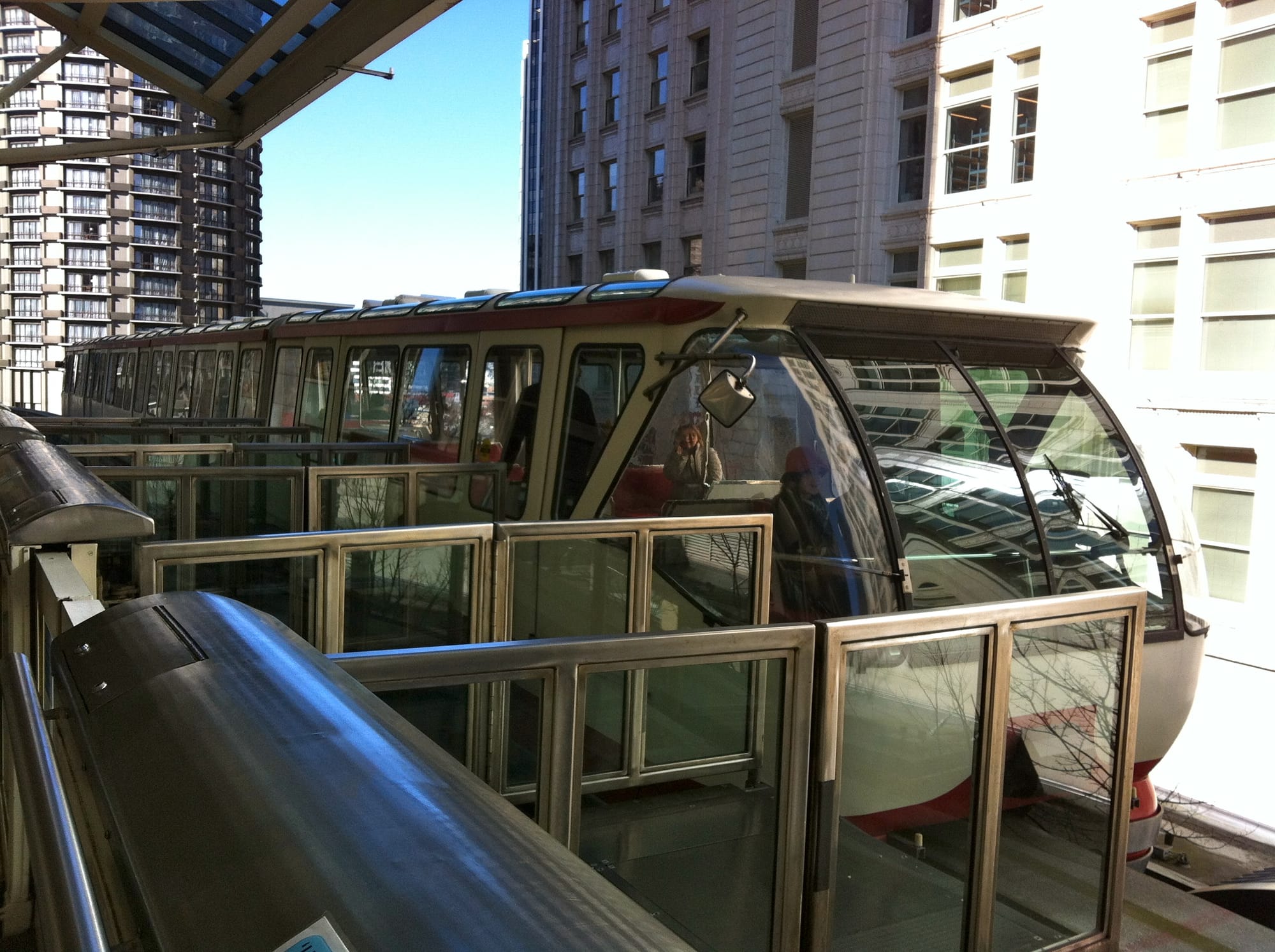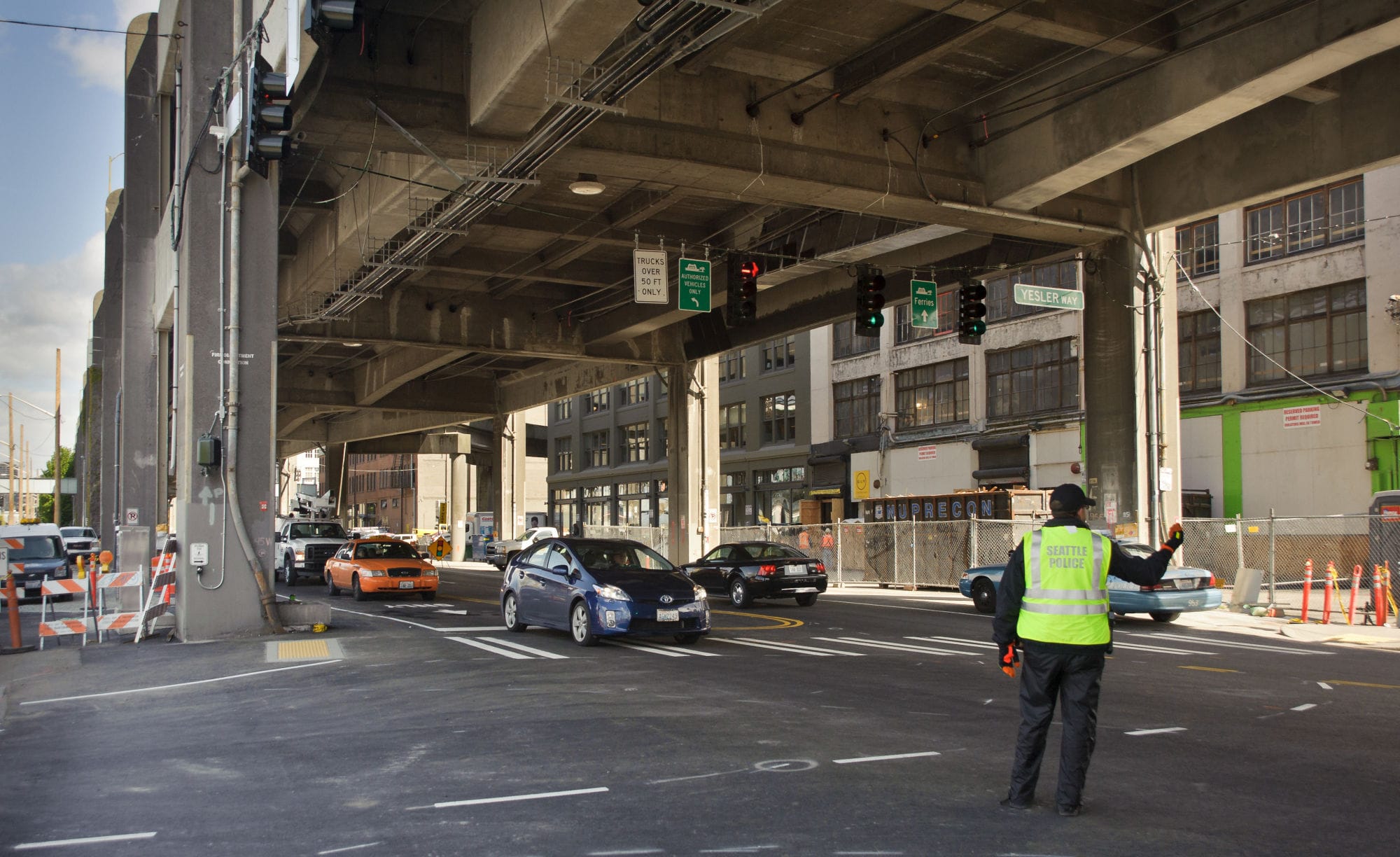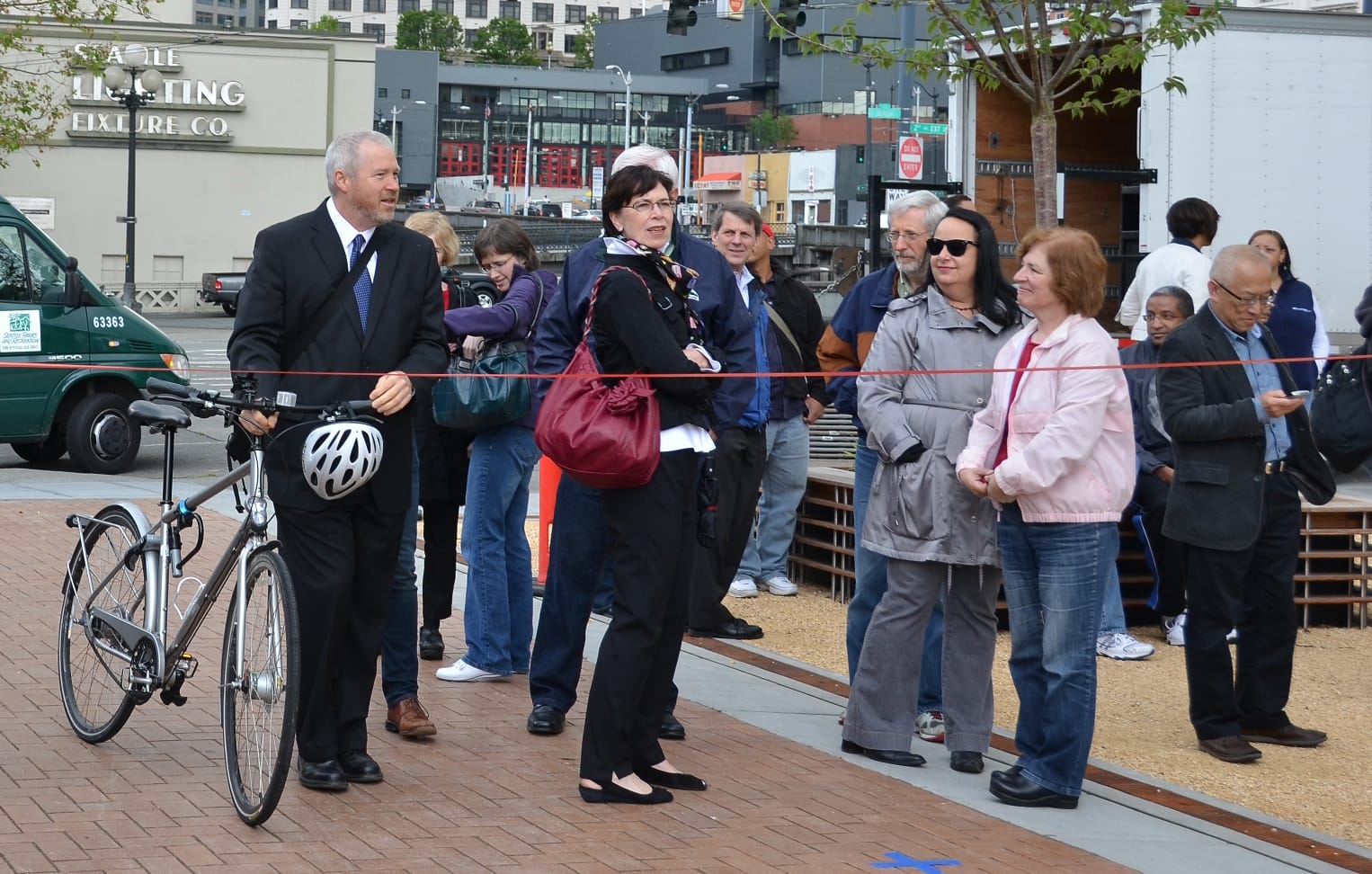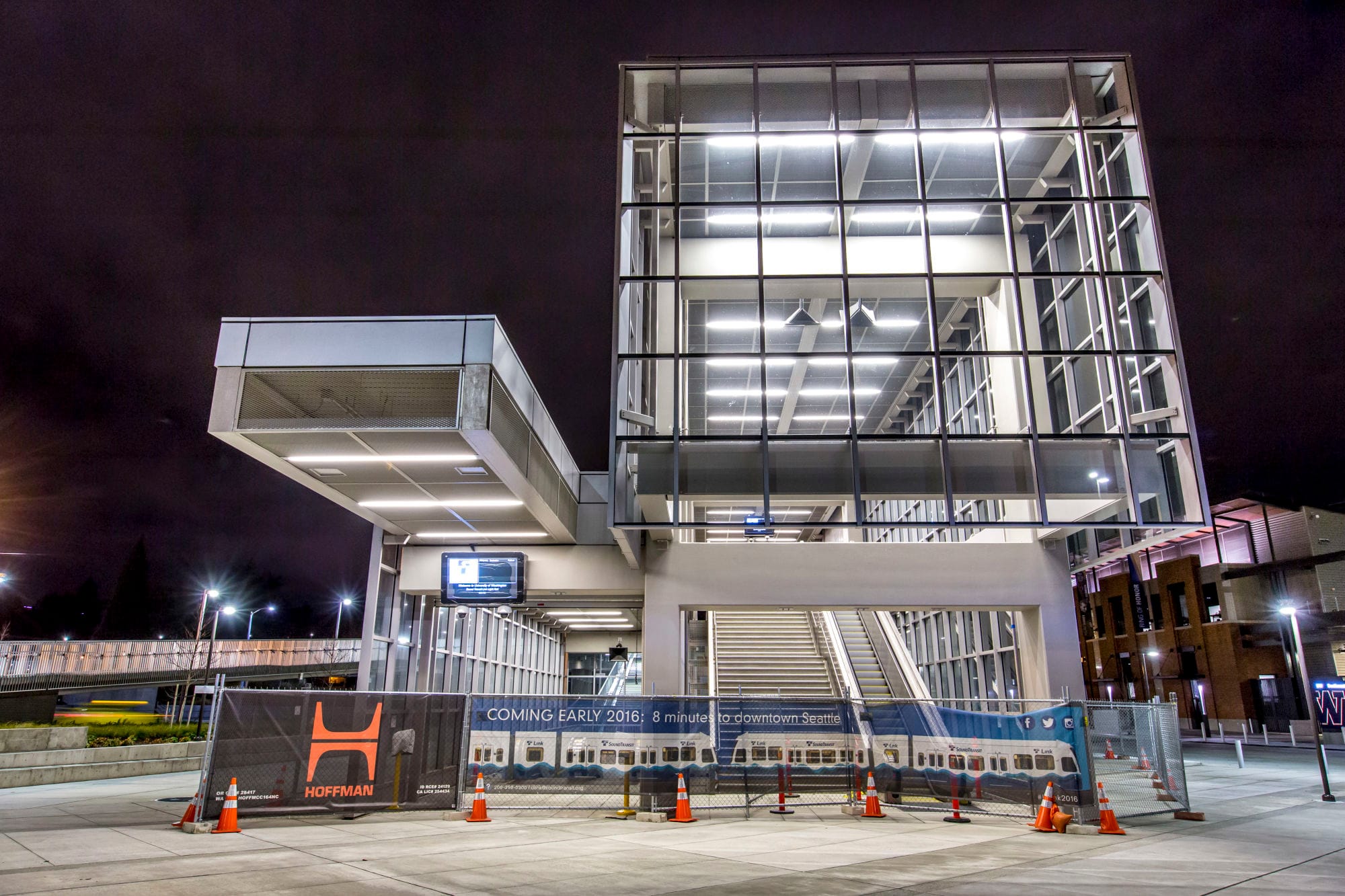In the fall of 2011, Sound Transit erected a fence around a two block radius of Capitol Hill. Everything within its perimeter — even the defunct Jack In The Box franchise — was slated for demolition, to make way for a new light rail station. This was meant to extend Seattle’s sole substitute for a real subway system.
It was then that the “No Parking” signs appeared, those temporary sandwich board signs that construction crews prop up when a project is underway: “No Parking: April 29, 8:00pm through May 1, 5:00pm”. But these signs didn’t specify a time of day, or a date, or even a month for their expiration. In big letters, they proclaimed, for all citizens to behold in their monolithic vagueness:
“No Parking: 2012 Through 2016”
This made perfect sense for the city. Better than anything mere writers could have written, these signs perfectly encapsulated Seattle’s historic transit philosophy: We’ll get you where you’re going. Maybe not pleasantly and probably not when you planned, but we’ll get you there.
But now the signs are coming down, six months ahead of schedule. On March 19, the University Link extension will open to the public, an event met with the fanfare of a “tailgate party” at University of Washington’s stadium and a “street festival” on Capitol Hill.
As Sound Transit fires up the barbeques and #RelevantSocialMediaHashtags (filter your Twitter feed by #ULink2016 for exciting transit-focused content), I can’t help but feel a sense of anxious doubt. So much can still go wrong in the next few days. The tunnel will flood and drain out Lake Washington. Surveyors will discover they accidentally laid the track upside down. Something you’d never imagine could possibly catch fire will catch fire.
This is a Seattle transit project, after all, and Seattle transit projects aren’t supposed to go right. We’re a city that prides itself on the efficiency and accessibility of our public transportation, though I can’t for the life of me figure out why. We’re choked with some of the nation’s worst traffic congestion, and struggle to find the funds to keep the buses running.
On-schedule light rail construction – with few surprises and little argument – just doesn’t seem to fit into our story.

The new Capitol Hill light rail station
It’s easy to forget that Seattle once marketed itself as the Future of Transit. In 1962, as part of the same World’s Fair for which we built the Space Needle, Seattle put up a monorail. A goddamned monorail. There is no better symbol for unachieved transit potential than a monorail — a revolutionary space-age concept now used by a handful of tourists to go about three blocks.
People still cling to the monorail’s futuristic promise, even as they watch empty car after empty car glide by over their heads. Even Hollywood finds the monorail’s heartbreaking story compelling: the story of Grant Cogswell’s 2001 campaign for Seattle City Council, based on extending the monorail system, got made into a Jason Biggs movie called Grassroots. A fun Seattle game: walk into a room full of men with beards and ponytails wearing fleece vests, mention the “Seattle Monorail Initiative,” and inhale the air of their wistful sighs for what could’ve been.
Only six years after the monorail’s construction, in 1968, Seattle voters struck down a proposal to build a comprehensive subway system that would include 49 miles of heavy rail. We said no to $900 million in earmarked federal funds that then went to Atlanta’s MARTA system.
If getting proper mass transit in a city is like trying to get a kite in the air, Seattle took the first running step along the ground by building the monorail. When it voted down the Forward Thrust initiative, the city took out a comically large machete and severed the string. When voters rejected the initiative again in 1970, they ran up to the kite and hacked it into little pieces of wood and nylon.
Seattle’s approach to transit infrastructure has always been reactive rather than proactive. Unfortunately, the city’s reflexes have slowed with age. In the spring of 1889, a massive fire destroyed over 100 blocks of our business district. Within a year, 465 new buildings had been built and downtown was back open. In the spring of 2001, engineers gave the aging Alaskan Way Viaduct a one-in-20 chance of collapsing in the next decade. Fifteen years later you can still drive on it if you’re feeling seismically lucky.

In 2007, after the Washington state government failed to reach a decision about how to replace the death-trap Alaskan Way Viaduct, they gave the voting public of Seattle a chance to provide feedback on two options: an elevated structure built to better earthquake standards, or a tunnel underneath the Seattle waterfront. Voters rejected both measures handily. The elevated structure received 43 percent “yes” votes. The tunnel received only 30 percent public approval.
Citing overwhelming public demand, the state modified the least popular option and announced plans to build a tunnel in 2009 – though not the “cut-and-cover” variety originally proposed, which may have been more disruptive for waterfront businesses. They decided not to put the idea to a vote this time around.
It’s here, amidst a time of political vagaries and opaque policymaking decisions, that the Tragic Tale of Mike McGinn’s mayoral term begins. A progressive politician hailing from the local chapter of the Sierra Club, McGinn swooped into the 2009 race running a classic outsider campaign. With just-enough-stubble-to-count-as-a-beard and his gentle voice, McGinn rode his bike from campaign stop to campaign stop carrying the Gospel of Public Transit.
“We have much more of an egoless campaign,” McGinn told the Seattle Times, presumably right before strapping on a neon vest and pedaling away into the sunset.
McGinn felt to many voters — especially his transit fanboys/fangirls/fan-non-binary-people — like a welcome relief from those who wanted to dig their Big Government drills under our precious waterfront. Like Cassandra of Greek myth, he turned out to have the gift of prophecy, but was cursed to have no one believe him.

McGinn decried the tunnel option as a waste of taxpayer money. He warned it would likely go way over budget when the unexpected inevitably occurred, and proposed an expansion of surface roads and public transit to meet the increased demand on roads when the viaduct was turned to rubble.
At a time when 70 percent of taxpayers opposed the tunnel decision by state politicians and City Council, McGinn resonated with voters. Still, two weeks before the mayoral election, the City Council voted unanimously to support the state’s deep-bore tunnel plan. Despite McGinn’s feeling of a public mandate against the tunnel, by the time he took office it seemed the project seemed like a done deal.
McGinn dodged between passing cars as he biked to City Hall every day, and immediately began to fight a quixotic crusade against the tunnel:
- He commissioned an independent study that classified the project as “HIGH

RISK; a Seattle Times op-ed immediately compared him to a cartoon of “a cutout shadow figure draped across the front of a huge tunnel boring machine trying to stop it from entering the city gates”.
- He vetoed a 2011 City Council statement supporting the tunnel; three weeks later, the Council overrode his veto.
- His office ran a campaign to put the tunnel decision before voters in the August 2011 election; voters approved the measure by a margin of 60 percent to 40 percent and Mike McGinn watched public support erode under his feet like the unstable soil of the Elliott Bay shoreline.
The state eventually brought in a custom-built tunneling machine named Bertha (built in Osaka, Japan, not the Bavarian Alps as her name might suggest), which fired up in July 2013 just as McGinn began to flounder in his re-election bid against State Senator Ed Murray.
Mike McGinn lost his shot at a second mayoral term on November 5, 2013. Exactly one month later, just as he warned, Bertha malfunctioned and ground to a halt.
As of now, Bertha has traveled a little over 1000 feet, and Seattle has the 4th worst traffic congestion in the United States, according to a study by GPS maker TomTom. The deep-bore tunnel is scheduled to open in early 2018. The arguments over who will pay for its massive cost overruns are scheduled to conclude sometime in the 22nd century.
As a result of our many transit failings, most of the operational public transit in Seattle lies in the King County Metro bus system, which, all things considered, is fine. It’s fine! You can get from one side of the city to the other in about an hour. The system would actually be great if our buses didn’t have to share street space with cars. In other words, if our bus system were actually a subway system.
The biggest problem King County Metro faces is the fact that it’s not Seattle Metro. The residents of Seattle at least support public transportation in theory. But King County also includes the more affluent communities of Bellevue, Mercer Island, and Redmond, which are often loath to spend $20 extra on car tabs to support the transit-whims of us irresponsible Seattleites. As a result, convincing the King County Council to approve tax increases to maintain Metro services can often be a difficult battle.
I’ve spent some time doing transit activism before the County Council, which I highly recommend to anyone who wants to hear non-sequitur complaints from disgruntled Eastsiders. I’ll never forget the man in Burien who stood before the council to complain about the time he saw two buses on the same route running next to each other.
Ultimately, a bus line from Southern Columbia City to the Seattle University campus is going to matter more to a college student who needs to commute than it does to someone in Woodinville. This is the beauty and the tragedy of public transit policy-making: stakeholders know exactly how important a route on the chopping block is to them, something that’s hard to internalize when you drive a Subaru across the Lake Washington Bridge every morning. Communities have nevertheless found ways to work around the King County gridlock; Mercer Island and Seattle both passed transit funding ballot measures after a failed countywide car tab vote in 2014.

But on Saturday, against all cynical expectation, Sound Transit will open the University Link extension to its first riders — bearded transit nerds with tears in their eyes, tourists seeking a quick trip up the hill to purchase legal marijuana, tech bros and “Woo!” girls visiting Pike/Pine to bar hop, plus other students, families, and citizens.
In November, Sound Transit will put a $27 billion light rail package in front of the voters. The Sound Transit Board will announce their draft plan next week, but an early educated guess from the Transportation Choices Coalition includes the construction of three new lines, connecting the Puget Sound region from Everett down to Tacoma, and a study on the feasibility of extending the system as far east as Issaquah.
The map looks, for the first time, like a real city subway map, with transfers and intersecting paths all snaking around each other in a lively urban dance. It ain’t London or Paris, but it ain’t a straight line either.
I look at the map and, somehow, I’m not thinking about everything that could go wrong — about whether the voters will approve it or whether the construction companies will follow their contracts or whether some previously unknown sinkhole will swallow Ballard.
I look at the map and I feel, for the first time I can remember, that maybe Seattle is starting to know what it’s doing on the transit front.
But then I hear that the new International District Streetcar line will break down if a truck with an especially large rearview mirror parks next to the tracks. Then I’m not quite so sure.
--
Sam Heft-Luthy is a Capitol Hill native, and has been previously published in Capitol Hill Seattle Blog and The Onion. To comment or contact the author, write editor@crosscut.com.
All light rail station photos by Don Wilson for Sound Transit. Monorail photo by Andrew Nash. Mike McGinn photo by Seattle Department of Transportation. Viaduct photo by Washington State Department of Transportation.



